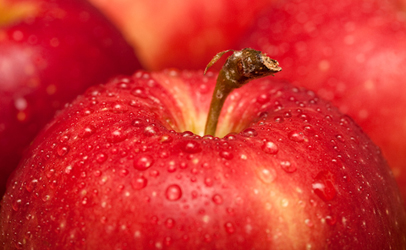 Group (EWG) released its annual Shopper’s Guide today, including the latest iteration of its “Dirty Dozen” list – a ranking of produce most likely to be contaminated with pesticides.
Group (EWG) released its annual Shopper’s Guide today, including the latest iteration of its “Dirty Dozen” list – a ranking of produce most likely to be contaminated with pesticides.The guide ranks 48 popular fruits and vegetables based on an analysis of 32,000 samples tested by U.S. Department of Agriculture and the U.S. Food and Drug Administration.
Topping the list of most contaminated was apples. As Food Safety News reported last week, EWG is asking that the U.S. Environmental Protection Agency investigate whether a pesticide commonly applied to conventionally grown apples but banned by the European Commission is safe for U.S. consumers.
The report also includes a list of the “cleanest” produce, featuring avocados at the top, with only 1 percent of samples tested showing any detectable pesticides.
“EWG’s Shopper’s Guide helps people find conventional fruits and vegetables with low concentrations of pesticide residues,” said Sonya Lunder, EWG’s senior analyst and principal author of the report, adding, “If a particular item is likely to be high in pesticides, people can go for organic.”
Other findings in the EWG report include:
- Every sample of imported nectarines tested and 99 percent of apple samples tested positive for at least one pesticide residue.
- The average potato had more pesticides by weight than any other food.
- A single grape tested positive for 15 pesticides. Single samples of celery, cherry tomatoes, imported snap peas and strawberries tested positive for 13 different pesticides apiece.
- Some 89 percent of pineapples, 82 percent of kiwi, 80 percent of papayas, 88 percent of mango and 61 percent of cantaloupe had no residues.
- No single fruit sample from the “Clean Fifteen” list tested positive for more than four types of pesticides.
In March, Food Safety News covered the release of USDA’s Pesticide Data Program annual summary in which, as in previous years, the agency found that, “U.S. food does not pose a safety concern based upon pesticide residues.”
In a recent opinion piece on this site, the Alliance for Food and Farming’s Marilyn Dolan took issue with EWG’s “Dirty Dozen,” stating that it’s “developed annually without regard to credible, accepted standards for determining risk and without peer review.”





